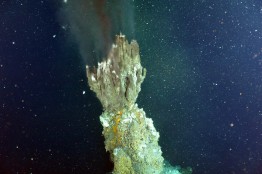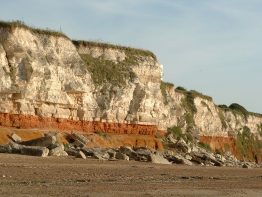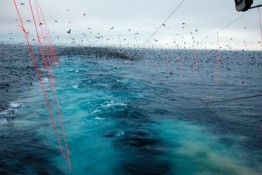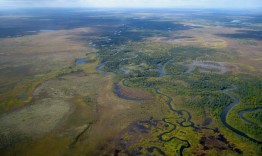https://youtube.com/watch?v=3OYG485OeAg A University of Washington oceanographer has helped create the first photographic atlas of the ocean floor. “Discovering the Deep: A Photographic Atlas of the Seafloor and Ocean Crust” (Cambridge University Press, 2015) was almost a decade in the making and contains more than 500 original illustrations and color photos, and access to online educational resources and high-definition videos. Its pages contain a history of deep-sea science and a global tour of the volcanoes, hot springs, rocks and animals that exist in extreme environments in the ocean depths.
Read more at UW Today »Glaciers in the Olympics, Paleo people's exploitation of megafauna, and more: Weekly published research, May 18
Each week we share the latest peer-reviewed publications coming from the College of the Environment. Over the past week, eighteen new articles co-authored by members of the College of the Environment were added to the Web of Science database, including three open-access studies of stickleback, global invasions of isopods, and phytoplankton blooms. Read more!
Read more »Washington Sea Grant’s Ed Melvin wins presidential award for seabird-saving streamer lines
A Washington Sea Grant staff scientist is sharing top honors for developing gear that nearly eliminates seabird bycatch in long-line fisheries from the West Coast to South Africa. Twenty years of work on sea and land to save threatened seabirds from becoming fishing bycatch have won national recognition for senior fisheries scientist, Ed Melvin, also an affiliate associate professor in the UW School of Aquatic and Fishery Sciences.
Read more at UW Today »Chemical tags in ear bones track Alaska's Bristol Bay salmon
Scientists from Aquatic and Fishery Sciences and other institutions are learning a lot about where Chinook salmon swim in Alaska’s Bristol Bay region through chemical signatures recorded in their ear bones. Similar to a tree’s growth rings, this bone—called an otolith—accumulates layers as the fish grows. Acting as a little recorder, each layer of the otolith corresponds to the unique chemical signatures of the waters in which they swam.
Read more at UW Today »2014-2015 award recipients honored at the College’s Spring Celebration
The festive vibe at the College of the Environment’s 1st Annual Spring Celebration provided a perfect backdrop in which to bid adieu to the academic school year and congratulate the College’s 2014-2015 award winners. Focused on College faculty, students, and staff, the event was an opportunity for friends and colleagues across all departments to gather and celebrate. As attendees mingled, members of the College’s Executive Committee served up ice cream sundaes.
Read more »





